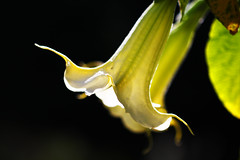Suppose you have only your first DSLR and a Canon Rebel. Now you are a professional, or at least a semi-pro. This is what everyone around you thinks.
And what about pictures? What are the requirements for a portrait lens Canon Rebel?
Each photographer is a portrait photographer at some point. Your family is assumed to have a large portrait shooters. Even more important for them to be as cheap labor.
It 'just a fact. When people see that the monsterCamera, they just assume that you are a professional and you can take any kind of image excellence.
Do not tell them they are just the beginning. Hold the camera against your face and awesome to let you think you are great your chosen hobby.
Here are the two most important things to consider for a decent head shot to maintain.
First, you want to stay away from the subject from any point 6-20 feet. Closer than 6 meters, and you will see some distortion inthe body.
Secondly, you should choose the widest aperture possible as possible, as of f/2.8 / 4 A grand opening will result in a reduced depth of field, which means that the level of focus a few inches (hit the face in the event of a head) in front of and behind the lens of the area is limited. The object of a shallow depth of field is a blurred background.
Choose a goal that can achieve this simply means looking in the camera bag or camera, because you can alreadyhave a good goal.
Your Canon Rebel has a sensor that the lens focal length multiplied by a factor of 1.6. So if you have a 100mm portrait lens Canon, actually taking a picture with an effective focal length of 160mm (which is 100 x 1.6).
A head shot with a photographic surface usually about 3 to 4 feet tall. Taking pictures with a 100 mm lens would be set at about 15 meters from the subject ... perfect.
At a minimum, the focal length could be used to achieve the sameStrike would be a 50 mm lens with you about 6 feet away from the position of the subject. A Canon EF-S 60 mm macro lens will do the job, too, and is made specifically for a rebel.
The perfect portrait lens Canon Rebel could be a longer focal length. In particular, a 70-200mm zoom works very well because of how totally awesome are the pictures. It's actually what many consider the Canon lens "flagship". If you are one of the 70-200mm lenses (and there are five of them now), itdetermined.
However, many photographers think that a fixed focal length of the best portraits (one has only one main lens focal length and not as a zoom) is done. There is no argument that a great head shot with a 100 mm or 135 mm fixed focal length can first be taken. These are excellent lenses. But they are also more expensive than others.
Assuming the budget to play a role in his decision, remember that the focal length can be anywhere between 50 mm and above. It 'really your position (distancethe subject), the prospect of recording, and the quality of the lens, making the shot.
If you are under a lot of portraits, then a high quality lens with the right focal length and the opening will be a good investment. However, if you have no intention of head shots that you want the most important form of photography, you could have a lens that meets your needs for any images that you plan to leave twice as large and a dress Canon lens Rebel Portrait. get
